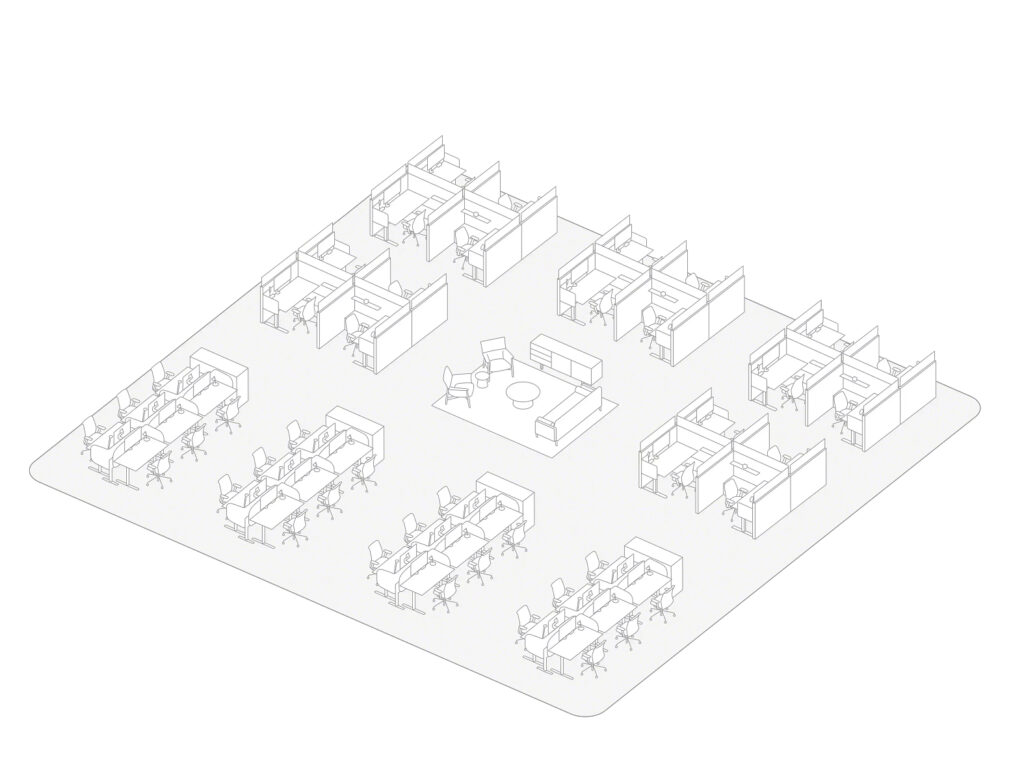The design of modern offices has changed forever. With the pandemic and the acceleration of digital transformation, workplaces have evolved into more flexible, safe, and collaborative environments. In a previous article about essential elements of a modern office, we explored the basic layouts. Now, we will examine how these offices can foster a true sense of community that boosts employee productivity and well-being.
Why are modern offices essential today?
Companies need workspaces that adapt to new hybrid and digital ways of working. Modern office design not only prioritizes functionality, but also fosters a sense of identity and company culture. The arrangement of furniture, the flexibility of the spaces, and the connectivity between teams are key factors in creating dynamic and human-centric environments.
Benefits of building community in the workplace
Building a sense of community in the workplace goes beyond the physical design; it’s a business strategy. Employees who feel connected demonstrate higher levels of engagement, motivation, and job satisfaction. According to Gallup, greater employee engagement translates into 18% higher sales productivity and up to 23% greater profitability. In short, a collaborative office environment is a worthwhile investment.
Design principles to foster collaboration
1. Proper density management
It balances the number of people in each area. The goal is to enable collaboration without creating overcrowding, thus facilitating workflow and concentration.
2. Diversity in spaces
Break away from the monotony of the traditional grid-like office layout. Integrate flexible spaces that combine desks, informal meeting areas, focus rooms, and social zones.
3. Outdoor areas and relaxation zones
Include features such as terraces, patios, gardens, or in-house cafes. These spaces promote creativity, spontaneous interaction, and overall well-being for the team.

4. Mixed-use spaces
It integrates different functions within the same area. For example, next to the workstations, it includes small tables for quick meetings, phone booths for calls, and collaborative spaces for group projects.
5. Active community participation
The design should also promote the exchange of ideas among team members. A good practice is to hold short knowledge-sharing sessions where more experienced members can share their insights with the newer team members.
The before and after of workspaces

Image courtesy of Steelcase.
In the past, offices were organized in repetitive grid layouts with few spaces for interaction. Today, modern office design emphasizes greater flexibility: less formal meeting rooms, smaller meeting tables instead of one large central table, and diverse areas that support different activities throughout the day, such as concentration, collaboration, learning, and socializing.

Image courtesy of Steelcase.
Conclusion: modern offices that foster community engagement
A community-oriented modern office design not only enhances the employee experience, but also strengthens company culture and profitability. The key lies in fostering interaction through thoughtfully designed spaces, appropriate furniture, and strategic layout.
If you want to transform your workspace and create a modern, collaborative office, contact us for a personalized consultation. Together, we will design environments that promote innovation, well-being, and the success of your business.